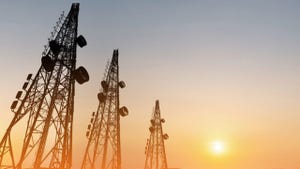BT sings rock-a-bye cell site to curb energy use
UK incumbent BT is using machine learning to put underutilised mobile sites into sleep mode during periods of low traffic.
June 24, 2024

Its mobile arm EE has been trialling cell sleep technology on its LTE network in all four home nations, and is now embarking on a nationwide deployment.
The machine learning technology is able to identify and then predict periods of low traffic at each individual site. Using this information, the system then switches off certain LTE carriers when the capacity is not needed.
During overnight periods of extremely low activity, sites can be put into 'deep sleep' when required.
Carriers are automatically 'woken up' again when the network gets busier. It can also react to unexpected surges during scheduled sleep cycles. BT says doing this only takes a matter of seconds, and won't lead to any service disruption for end users.
BT estimates that once up and running, cell sleep and deep sleep will deliver energy savings of up to two kilowatt hours (kWh) per site per day, or 4.5 million kWh per year. Based on figures from the Department for Business, Energy and Industrial Strategy (BEIS), that's equal to the annual electricity usage of nearly 1,300 homes.
"There is huge potential for energy savings across our networks by dynamically matching power consumption against network usage," said Greg McCall, BT's chief networks officer. "The optimisation and roll-out of cell sleep technology to over 19,500 sites across the UK is a significant milestone in achieving this, and an important development in countering the massive growth in data consumption we're seeing across our networks."
BT said networks account for 89% of the group's total energy consumption. To have any hope of reaching its target of net zero carbon emissions by the end of March 2031, it needs to address network energy efficiency.
In addition to sleep mode, earlier this year BT finished decommissioning its 3G network, which will save around 17.4 million kWh per year.
It has also rolled out more energy-efficient RAN equipment, including ultra-lightweight massive MIMO, which consumes 40% less energy than the previous generation of radio equipment.
BT's announcement has arrived less than a week after EE rival Three detailed similar efforts to improve the energy performance of its network.
Together with Ericsson, Three is also rolling out machine learning, passive cooling and power-saving features, which together can lead to a claimed 70% improvement in energy efficiency.
Not to be outdone, Vodafone is also rolling out software-based power saving on its UK mobile network, and like EE has already completed its 3G switch-off.
Meanwhile, Virgin Media O2 (VMO2) has begun its own 3G shutdown, and is rolling out smart sensors, air cooling and software that has resulted in an 82% improvement in network energy efficiency since 2015. It is also upgrading its fleet to electric vehicles.
As telcos continue to struggle with their efforts to grow revenue, reducing expenses takes on more significance. If they can do that and at the same time help the planet, then all the better.
About the Author
You May Also Like


.png?width=300&auto=webp&quality=80&disable=upscale)







.png?width=300&auto=webp&quality=80&disable=upscale)


_1.jpg?width=300&auto=webp&quality=80&disable=upscale)